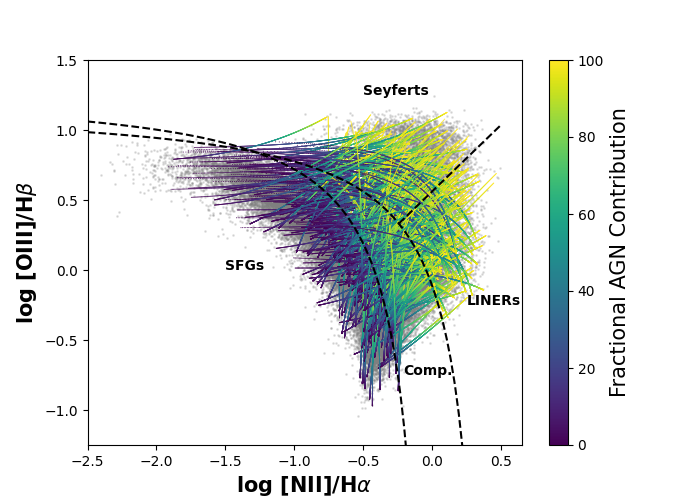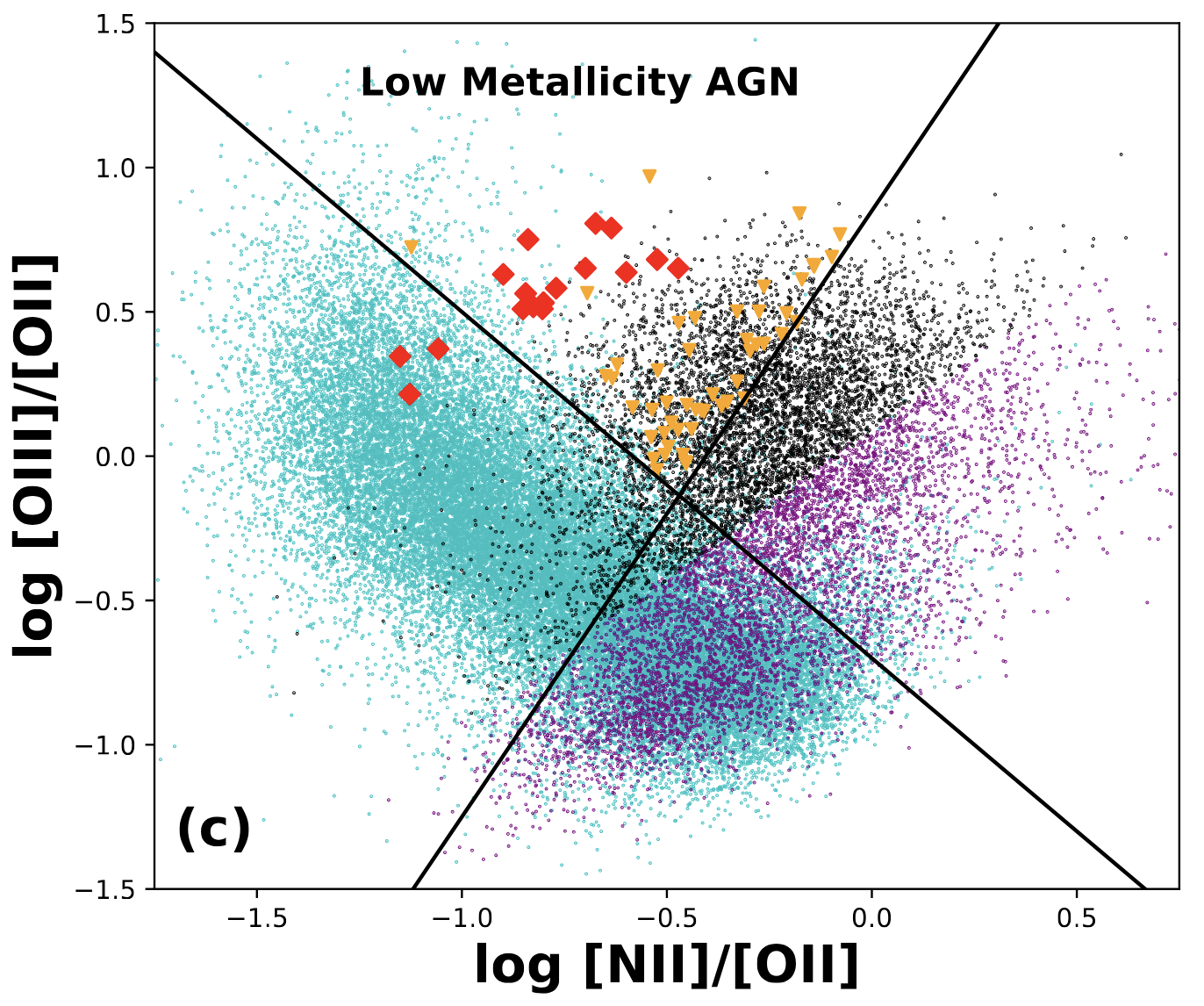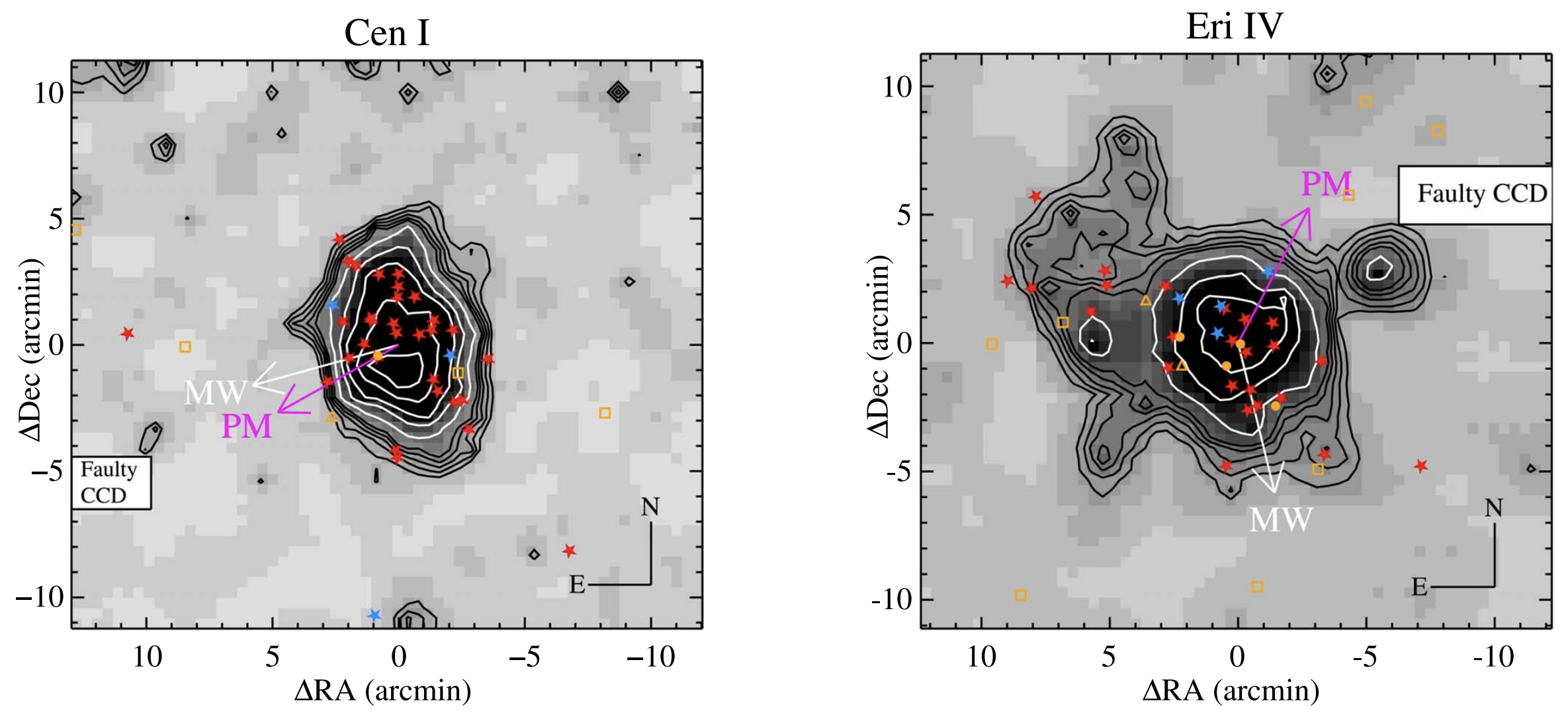Science
Interests: galaxy evolution, active galactic nuclei, post-starburst galaxies, ultra-faint dwarf galaxies, photoionization modeling, time-domain astronomy, IFU spectroscopy, big data & machine learning
Active galactic nuclei (AGN) are the physical manifestation of accretion onto a supermassive black hole (SMBH) in the center of a galaxy. This process produces radiation across the entire electromagnetic spectrum. Radiation produced by the AGN can dominate the luminosity in the central regions of galaxies, or, in the most extreme cases, outshine the combined stellar light of the host galaxy. Such systems are interesting to study as AGN can have profound impacts on their host galaxy, and these events are some of the most energetic phenomena in the Universe!
Fading AGN
AGN are thought to play important roles in regulating star formation in galaxies. Simulations show that without feedback from AGN, galaxies form far too many stars compared to what we observe. Given that these processes take place over millions and billions of years it can be difficult to determine the exact role AGN play in regulating star formation. Using optical IFU spectroscopy, I search for AGN which have turned off in the past ~10,000 years (i.e. fading-AGN). The importance of such systems is two-fold: 1) we can quantify the stellar populations in such systems to determine if these galaxies recently hosted starburst events, and 2) we can place limits on the number of AGN "turning-off" in the local Universe.
To enable such studies, I wrote a piece of code to quantify the contribution of an AGN to its observed spectrum by decomposing emission on the BPT diagram (see Figure below). Given the observed location on the BPT, this model can calculate the percent contribution from the AGN (i.e. 0% - 100%) The code is open source and easy to use, check it out here.

Low-Metallicity AGN
The metallicity (i.e., elements heavier than helium) of a galaxy scales with the galaxy's stellar mass because more massive (gravitational) potential wells retain their metals more effectively. AGN primarily reside in massive host galaxies which are therefore metal rich. Low-metallicity AGN are interesting to study because they can potentially shed light on the early phases of black hole and host galaxy co-evolution; however, these systems are few and far between
The [NII]λ6584Å emission line is a great tracer of metallicity due to the secondary nature of nitrogen in stellar nucleosynthesis. Therefore, we can select low-metallicity AGN based on low ratios of [NII]/Hα on the BPT diagram. Recently, I've been looking at a subset of low-metallicity AGN in SDSS/eBOSS which display unique properties similar to high-redshift AGN. Identifying more of these high-redshift analogs will aide in a more complete understanding of BH-host galaxy evolution and the effects of super-Eddington accretion on galaxy spectra. Click on the figure below to look at the abstract for a presentation I gave at AAS #238, and keep an eye out for this paper!

Transient Events in AGN Disks
Dummy Text
UFDs
Along with AGN, I study a very different regime of faint Milky Way satellite galaxies called "ultra-faint dwarfs." UFDs are among the oldest, faintest, least massive, most metal-poor, and most dark matter dominated galactic systems in the Universe. Due to these properties, UFDs can be used as unique labratories to study the nature of dark matter, the validity of ΛCDM, and galaxy formation on the smallest scales. Check out my recent work on Centaurus I and Eridanus IV published in the Astrophysical Journal alongside the DELVE collaboration.
